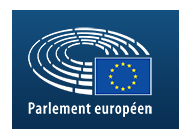Document type : news item from Euractiv
Author: Paula Andrés
Preview: Phase-out of cages in farming, shortening journeys of live animals, ban on mutilations, and limiting stocking density are some of the Commission's preferred measures in the forthcoming animal welfare legislation revision, a leaked impact assessment shows.
The impact assessment report, seen by EURACTIV, is the formal step ahead of the unveiling of a legislative initiative and illustrates the different policy options at the disposal of the EU executive, as well as testing its ambition.
Since 2009, the legislation has only gone through "minor technical adaptations", says the report, while acknowledging increased citizen's awareness of animal welfare and new scientific advice available.
The draft impact assessment evaluates the economic and social impact of implementing new policy measures, with the aim of improving the conditions "of the billions of animals that will be reared in the EU in 2038".
The study is divided into four sets of measures that impact animal welfare: Welfare of animals kept for economic purposes, at the time of the killing, during transport, and animal welfare labelling..
The executive leans toward following recommendations from the European Food Safety Agency (EFSA), whose recent scientific reports conclude that cage-free systems are most effective in terms of animal welfare. [...] The report shows that the Commission’s preferred option is to phase out cages for laying hens, pullets, calves, ducks, geese and quails, broiler breeders and layer breeders – with the exception of pedigree birds until the Commission proposes other cage-free solutions for these in 10 years.
The same measure also includes the phase-out of sow stalls and farrowing crates for pigs – used to immobilise a pig that gave birth to avoid crushing piglets – and a prohibition of the tethering of cows – a farming practice in which cows are tied and restricted to sitting or standing. .
On mutilations, the executive backs banning practices such as beak trimming of birds and tail docking of pigs, with a transition period of 15 and 10 years respectively.
A ban on dehorning dairy cows and tail docking in dogs will have a transition period of five years. Disbudding calves without anaesthesia or analgesia – removing the horn before it attaches to the skull – will also be banned within five years.
In terms of imports of animal products, “equivalent animal welfare requirements […] would apply”, according to the report.
It is expected that the most affected trading partners will be Brazil and Thailand in the case of poultry meat, and Brazil, Argentina and Uruguay in the case of beef.
Ukraine’s egg and egg products sector will as well be affected due to new requirements. However, “since Ukraine has applied for accession to the EU, it committed to aligning with the EU acquis independently of this measure”, says the report.
Regional cost differences and uneven enforcement of EU animal transport rules by member states incentivise live animal transport, leading to loopholes and risks to adequate animal welfare standards according to the European Court of Auditors.
Animal transport 'key component'
The transport of live animals, which has been addressed by EFSA and most recently by the European Court of Auditors (ECA), was a “key component” of the legislation, according to the Commission [...] According to the report, banning the export of live small and large ruminants, such as cattle, sheep and goats, “would greatly improve animal welfare”, though it would have “important negative economic impacts on the entire EU economy”. "“An alternative option would be to allow the exports to continue, but under stricter conditions than today,” says the report.
The proposals to improve these conditions could include journeys of nine hours maximum for animals transported for slaughter and a maximum journey time of 21 hours – and 24 hours of rest – for animals transported for other reasons.
Transport journeys will also be linked to weather forecasts, with a maximum of eight-hour journeys between 25°C and 30°C and only transport at night if the weather forecast is higher than 30°C.
Voluntary" animal welfare labelling
Animal welfare labelling is meant to better inform consumers about the conditions of farmed animals.
However, EU-harmonised rules on animal welfare labelling do not exist for most animal products – only to table eggs – and national labelling schemes have been put in place in different member states, causing distortions in the market and confusion among consumers.
The executive’s report assessed the impact of a mandatory animal welfare labelling system and found a compulsory multi-tier EU animal welfare label “would be most effective in informing all consumers on all products on the market and would have the greatest potential for improving animal welfare standards.”
Despite that, the executive’s report proposes a voluntary multi-tier animal welfare label rather than a mandatory one, “since a majority of stakeholders support a voluntary [label]”.
Ban on fur farming ban pending
Interestingly, the report concludes that no preferred option has been selected as regards fur farming, “pending political decision.”
However, the study recognises that a ban on fur farming “would be the more effective option from an animal welfare point of view, compared to the option of establishing new basic requirements” based on future EFSA assessments.[...]
"“The ban would avoid the welfare issues encountered of the 8.8 million animals still raised for fur production across 12 Member States,” says the report, while also observing that unless a ban on fur-farmed products in the EU market is also in place, the prohibition of only fur farming in the EU could lead to increased imports from third countries.






